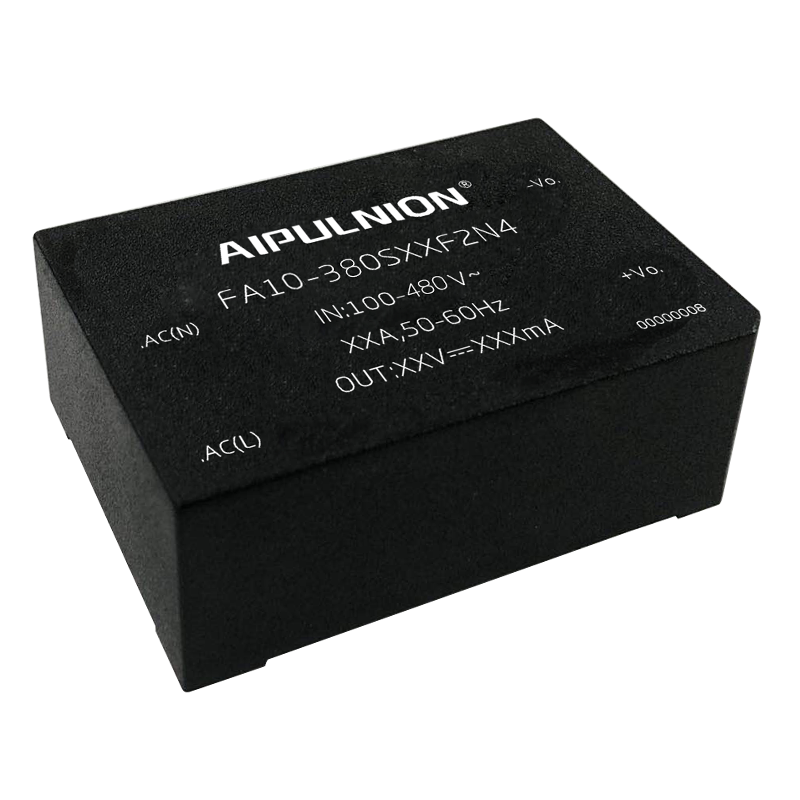Chinese Spring Festival
The Spring Festival in 2024 is coming soon, so how much do you know about the origins and customs of the Spring Festival? Don’t worry! Today I will provide you with an article with information about the Spring Festival. Come and find out quickly!
Introduction
The Spring Festival is the most solemn and distinctive traditional festival among Chinese people, and it is also the most lively ancient festival. Generally refers to New Year's Eve and the first day of the Lunar New Year, which is the first day of the year. It is also called the lunar year and is commonly known as "Chinese New Year". But among the people, the Spring Festival in the traditional sense refers to the period from the twelfth lunar month on the eighth day of the twelfth lunar month, or the twelfth lunar month on the 23rd or 24th day of the twelfth lunar month, to the fifteenth day of the first lunar month, with New Year's Eve and the first day of the first lunar month as the climax. During the Spring Festival, my country's Han and many ethnic minorities hold various activities to celebrate. These activities mainly focus on offering sacrifices to gods and Buddhas, paying homage to ancestors, eradicating the old and bringing in the new, welcoming the new year and blessings, and praying for a good harvest. The activities are rich and colorful with strong national characteristics. It is still customary to hang Chinese knots during the Spring Festival in Tianjin. Before New Year's Eve, Tianjin people have the custom of going to Qiaoxiang Pavilion in Tianjin Ancient Culture Street to ask for Chinese knots, which means Qiaoxiang receives blessings.
The Spring Festival is the most important festival for the Han people, but more than a dozen ethnic minorities such as the Manchu, Mongolian, Yao, Zhuang, Bai, Gaoshan, Hezhe, Hani, Daur, Dong and Li also have the custom of celebrating the Spring Festival, but the form of the festival has their own The national characteristics are even more profound.
The Spring Festival has different names in different eras. In the pre-Qin period, it was called "Shangri", "Yuanri", "Chanisui", "Xiansui", etc.; in the Han Dynasty, it was also called "Three Dynasties", "Suidan", "Zhengdan", "Zhengri" ; In the Wei, Jin, Southern and Northern Dynasties, it was called "Yuanchen", "Yuanri", "Yuanshou", "Suichao", etc.; in the Tang, Song, Yuanming and Ming dynasties, it was called "New Year's Day", "Yuan", "Suiri", "Xinzheng" ", "Xinyuan", etc.; in the Qing Dynasty, it was always called "New Year's Day" or "Yuan's Day".
The origin of the Spring Festival
The Spring Festival was called "Zhengdan", "New Year's Day", "Three Yuan", etc. in ancient times. On December 31, 1911, the Hubei military government of the Republic of China issued the "Encyclical of the Ministry of Internal Affairs on the Switch to the Gregorian Calendar in the Republic of China", clearly referring to the New Year's Day as the "Spring Festival". By September 27, 1949, the First Plenary Session of the Chinese People's Political Consultative Conference further clarified that the first day of the first lunar month was called the "Spring Festival", and the name "Spring Festival" was officially included in the Chinese Festival Code. The Spring Festival is commonly known as "New Year"
"Nian" is written in oracle bone inscriptions with the character "禾" in the upper part and the character "人" in the lower part. The word "year" in bronze inscriptions is also the same as in oracle bone inscriptions, and it comes from grain and people. "Nian" in Xiaozhuan is written as "上禾下千", "Shuowen Jiezi·Hebu": "Nian means that the grain is ripe. From the grain, from Qian Sheng." The Xiaozhuan has changed the word "人" into "Qian" Yes, so Xu Shen used this explanation, and the character "Qian" originally meant a decorated person, so this explanation is not contradictory. "He" is the general name for grains and cannot be mistakenly interpreted as "wheat". The quality of the annual harvest is mainly determined by the growth and harvest of "Grain", and the word "Grain" in the oracle bone inscriptions that have been excavated almost always looks like it has been bent down under heavy pressure, which shows that it symbolizes Get a bumper harvest in grain production. What is the explanation for the word "人" under the word "年"? From the oracle bone inscriptions, the word "year" seems to be a person carrying grain on his head.
There is also a legend that in ancient China there was a monster called "Nian" with long tentacles on its head and it was extremely ferocious. "Nian" lives deep on the bottom of the sea all year round, only climbing ashore every New Year's Eve to devour livestock and harm people. Therefore, every New Year's Eve, people in villages and villages help the old and young to flee to the mountains to avoid the harm of the "Nian" beast. One New Year's Eve, an old man came begging from outside the village. The villagers were in a hurry and panic. Only an old woman in the east of the village gave the old man some food and advised him to go up the mountain quickly to avoid the "Nian" beast. The old man lifted up his beard and said with a smile: "If my mother-in-law lets me stay at home all night, I will We must drive away the Nian beast." The old woman still continued to persuade, and the begging old man smiled and said nothing.
In the middle of the night, the "Nian" beast broke into the village. It found that the atmosphere in the village was different from previous years: at the east end of the village, the old woman lived in her husband's house, with red paper on the door and brightly lit candles in the house. The "Nian" beast trembled all over and screamed strangely. As he approached the door, there was a sudden "bang, bang, bang, bang, bang, bang, bang, bang, bang, bang, bang, bang, bang, bang, bang, bang, bang, bang, bang, bang, bang, bang, bang, bang, bang, bang, bang, bang, bang, bang, bang, bang, bang, bang, bang, bang, bang, bang, bang," explosion in the courtyard. Nian was trembling all over and didn't dare to go any further. It turns out that "Nian" is most afraid of the color red, fire and explosions. At this time, the door of my mother-in-law's house opened wide, and an old man wearing a red robe was seen laughing in the courtyard. "Nian" turned pale with fright and ran away in embarrassment. The next day was the first day of the first lunar month. People who had returned from the refuge were surprised to see that the village was safe and sound. At this time, the old woman suddenly realized and hurriedly told the villagers about the beggar's promise to the old man. This incident quickly spread in the surrounding villages, and people all knew how to drive away the "Nian" beast. From then on, every New Year's Eve, every family posted red couplets and set off firecrackers; every household lit candles and watched the New Year's Eve. Early in the morning on the first day of the Lunar New Year, we also visit relatives and friends to say hello. This custom spreads more and more widely and has become the most solemn traditional festival among Chinese people.
This statement is probably based on the customs and traditions of later generations. Unlikely the origin of "year".
The origins of the Chinese New Year, or Spring Festival, can be traced back thousands of years to ancient China. The festival's inception is deeply rooted in myth, legend, and agricultural traditions.
One prominent legend associated with the Chinese New Year is that of Nian, a mythical beast that terrorized villages. According to the legend, Nian would emerge annually on New Year's Eve to devour crops, livestock, and even villagers, particularly children. Over time, people discovered that Nian was afraid of loud noises and the color red. This led to the practice of using firecrackers and hanging red decorations to ward off the mythical creature.
The Chinese New Year also has agricultural origins, closely tied to the lunar calendar. The festival marks the end of winter and the beginning of spring when farmers prepare for the upcoming planting season. The celebration was initially a way to honor deities and seek their blessings for a bountiful harvest.
Emperor Huangdi, a central figure in Chinese mythology, is believed to have established the first day of the lunar calendar as the New Year to align with the agricultural cycles. This laid the foundation for the Spring Festival, a time when people gathered to express gratitude to deities and ancestors, ushering in the renewal of life and the promise of prosperity.
Over the centuries, the Chinese New Year evolved, incorporating various cultural and religious practices. It became a time of family reunions, ancestral worship, and communal festivities. The widespread belief in the influence of celestial bodies, particularly the moon, contributed to the significance of the lunar calendar in determining the timing of the New Year.
As dynasties rose and fell, different regions and communities added their unique customs and rituals to the festival. The adoption of the zodiac system, with its twelve animal signs, further enriched the symbolism associated with the Chinese New Year. Each year is linked to a specific animal, and people believe that the traits of that animal influence the events of the year.
In contemporary times, the Chinese New Year has transcended its agrarian roots and mythical origins to become a cherished cultural celebration. It is a time for family reunions, feasting, honoring ancestors, and ushering in the new year with hope and positivity. The rich tapestry of traditions associated with the Spring Festival reflects the cultural resilience and enduring significance of this ancient Chinese celebration.
Chinese New Year holiday
Basically, countries with a sizeable Chinese population observe the Lunar New Year as a public holiday.
--Chinese mainland:
The Spring Festival holiday generally lasts from the afternoon of New Year’s Eve to the seventh or eighth day of the Lunar New Year. Starting from 2008, the Spring Festival holiday has been adjusted to New Year's Eve and the two days before the first lunar month.
--Taiwan, China:
On New Year's Eve and the first three days of the first lunar month, if New Year's Eve or the first day of the first lunar month falls on a Saturday or Sunday, the fourth (and fifth) day of the first lunar month will be a compensatory holiday. For example, in 2007, the Lunar New Year's Eve (February 17) and the first day of the first lunar month (February 18 Days) happen to fall on Saturdays and Sundays, so the fourth day of the first lunar month (February 21) and the fifth day of the first lunar month (February 22) are included as consecutive holidays.
--Hong Kong and Macau, China:
The first three days of the first month. If any of the first three days of the first lunar month happens to be a Sunday, New Year's Eve will be included as a public holiday. For example, in 2007, the first day of the first lunar month (February 18) happened to be a Sunday, so New Year's Eve was included as a public holiday.
--Malaysia:
All states have holidays on the first two days of the first month.
--Singapore:
The first two days of the first lunar month.
--Vietnam, South Korea:
The first three days of the first month.
Chinese New Year Custom
During the Chinese New Year, there are several important customs and considerations that individuals and families observe to ensure a harmonious and prosperous celebration.
1.Spring Cleaning: Before the festival, it is customary to thoroughly clean one's home to sweep away any lingering bad luck from the previous year. This symbolizes making a fresh start and welcoming good fortune.
2.Decoration in Red: Red is a symbol of luck and happiness in Chinese culture. Decorating homes with red lanterns, couplets, and other auspicious symbols is believed to bring prosperity and ward off evil spirits.
3.Reunion Dinner: The reunion dinner on the eve of Chinese New Year is a central part of the celebration. Families gather to share a sumptuous meal, fostering unity and togetherness. It's essential to include traditional dishes that carry symbolic meanings for good luck and fortune.
4.Wearing Red Clothing: Wearing new red clothing during the festival is considered auspicious. It is believed to bring good luck and drive away misfortune, making it a common practice for individuals to buy new outfits for the occasion.
Giving and Receiving Hongbao (Red Envelopes): Elders give red envelopes containing money to children and unmarried individuals as a gesture of blessings and good wishes for the coming year. It's important to present these envelopes with both hands and receive them with gratitude.
5.Fireworks and Firecrackers: The tradition of setting off fireworks and firecrackers during the New Year stems from the belief that the loud noises scare away evil spirits. However, it's crucial to follow safety guidelines and local regulations to prevent accidents and disturbances.
6.Visiting Relatives and Friends: Making visits to the homes of relatives and friends is a common practice during the festival. This symbolizes maintaining strong social connections and fostering positive relationships. Bringing small gifts or hongbao when visiting is a thoughtful gesture.
7.Respecting Ancestors: Ancestor worship is an integral part of the Chinese New Year. Families often visit ancestral gravesites to pay respects and offer prayers. This practice reinforces a connection to heritage and honors those who came before.
8.Avoiding Taboos: Certain actions are considered inauspicious during the Chinese New Year. This includes avoiding the use of sharp objects, refraining from discussing negative topics, and not sweeping the floor on New Year's Day to prevent sweeping away good luck.
9.Lantern Festival: The fifteen-day celebration concludes with the Lantern Festival. Participating in lantern-related activities, such as making or viewing lanterns, is a joyful way to mark the end of the festivities.
Observing these customs and considerations contributes to a joyous and culturally rich Chinese New Year, fostering a sense of community, tradition, and optimism for the year ahead.
Spring Festival family banquet etiquette
The issue of dining etiquette has a long history. According to literature records, starting from the Zhou Dynasty, dietary etiquette has formed a fairly complete system. In particular, it was praised and praised by Confucius, who served as a wine sacrificer in the state of Lu. aspect. During the Spring Festival, when families reunite and meet relatives and friends, the number one thing is to be busy with the word "eat". In order to eat nutritiously, hygienically, civilly, and happily during the Spring Festival, family dinners must pay attention to etiquette.
1. Treat others with courtesy while drinking wine and tea
In today's society, entertaining guests with tea has become a common way of communication in people's daily social and family life. As the saying goes: Respect others with wine, and deceive others with tea. When making a toast, the cup should be filled to the fullest, while when serving tea, one should be careful not to fill the cup too full, preferably seven to eight minutes full. Otherwise, it will be considered as expelling guests. "
2. The dinner table turntable rotates slowly in clockwise direction
When dining at a party, we often encounter a round table with a turntable. If there is a distinction between senior and young people at the dinner table, as soon as a dish is served, it should be moved to the host, guest of honor, and venerable person first. After they have enjoyed it, others will wait. Spin the wheel. Moreover, the turntable should rotate clockwise and avoid rapid rotation.
3. There is a saying about fish head and fish tail
During a family banquet, the host should place the fish head towards the person with the oldest seniority and the highest position at the table, who should take the lead in eating fish and drinking wine. If someone uses chopsticks before the person facing the fish head speaks, they will be ridiculed as not understanding the rules or not having seen the big scene.
4. "Hands and fists salute" the hands are high and low
In most cases, the hand-over ceremony should be with the left hand on top and the right hand on the bottom, that is, the left hand presses the right hand. This is because people generally use their right hand to hold weapons, and pressing the right hand with the left hand symbolizes or expresses the ancient Chinese people's desire to love peace. "And the right hand pressing the left hand is a sign of mourning.
Spring Festival visit etiquette
In ancient times, if there were too many relatives and friends in the neighborhood and it was difficult to visit them all, servants would be sent to bring business cards to pay New Year greetings, which was called "flying invitations". A red paper bag was posted in front of each house with the word "Receive blessings" written on it, that is, For the purpose of flying posts. Nowadays, most people visit each other during the Spring Festival. Visiting relatives and friends during the festival not only follows the traditional customs, but also renews the family ties that have been alienated due to busy work. But remember not to cause unnecessary burden and trouble to others by visiting them yourself.
1. Wear new clothes, bring new year’s goods, and say auspicious words.
The clothes must be clean and tidy, and no matter whether they are expensive or not, you must carry gifts in your hands. Of course, the New Year greetings you say when you enter the door are essential.
2. The visit must be confirmed in advance.
Before visiting, be sure to confirm whether the host is at home. It is very important to make a phone call to confirm before departure, or the night before, so as not to miss out. Therefore, you need to pay attention to the New Year and festivals, and you must confirm in advance if you have an appointment.
3. Pay attention to visiting in moderation.
For a courtesy visit, the shorter the better during New Years and holidays, and the time spent at the guest's home is generally ten minutes; for a visit from relatives and friends, generally half an hour is appropriate, and it is not an extremely special situation. It is not advisable to stay for more than an hour. Under normal circumstances, if you are not a close relative or old friend, do not stay for a meal, because the burden on the other party will be heavy.
4. Pay attention to the hygiene of shoes and socks.
Nowadays, urban people's homes are more luxuriously decorated. They have to take off their shoes when entering the door. Some people don't pay much attention to this. Therefore, if an experienced person visits other people's homes, the hygiene of shoes and socks is very important. This is a detail, and Education is reflected in the details.
5. The scope of activities must be limited.
When visiting someone else’s home, be sure to stay within the designated area of activity, which is the living room. Walking around at will may cause embarrassment to the host, so it is important to exercise moderation when visiting other people's homes. Even family members and friends should pay attention.
All in all, Chinese New Year is a significant traditional festival celebrated in China and other East Asian countries. The festival marks the beginning of the lunar new year and is the most important holiday in Chinese culture. One common tradition during the Spring Festival is the reunion dinner, where family members gather to share a special meal on the eve of Chinese New Year. People often clean and decorate their homes to welcome good luck, using red decorations as the color symbolizes prosperity and happiness.
The exchange of red envelopes, or "hongbao," is another customary practice. These envelopes, usually containing money, are given to children and unmarried individuals as a gesture of good wishes for the upcoming year. Fireworks and dragon dances are also popular during the festival, believed to drive away evil spirits and bring good fortune.
Additionally, paying visits to relatives and friends is an essential part of the Spring Festival. It is a time for people to strengthen family bonds and renew friendships. The festival lasts for 15 days, culminating in the Lantern Festival, marked by the lighting of lanterns and various cultural performances.
In essence, the Chinese New Year is a spectacle of joy, unity, and cultural richness. It is a time when traditions, both ancient and modern, converge to create a tapestry of celebration that resonates across generations. The vibrant scenes of festive decorations, lively performances, and heartfelt gatherings paint a picture of the grandeur that surrounds the Spring Festival in China.
























































































































































































































































